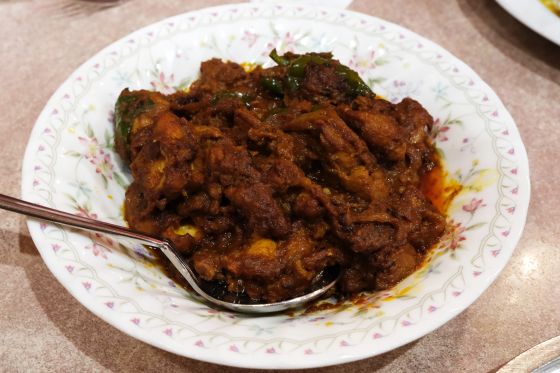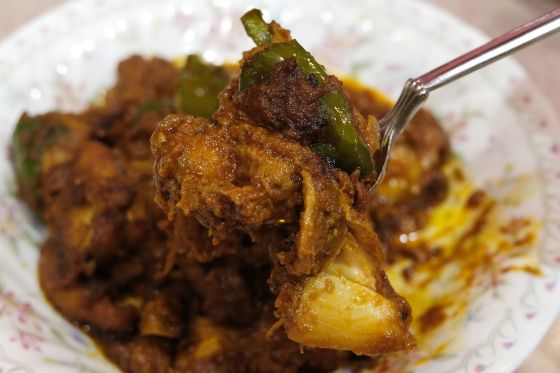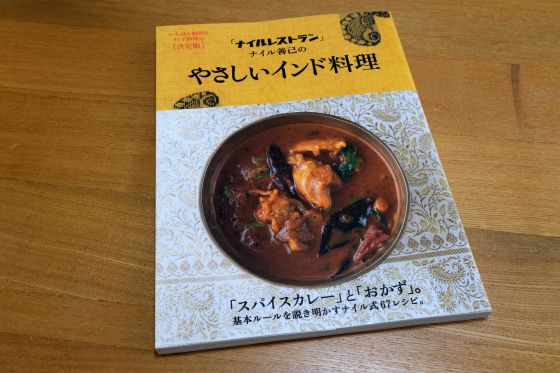I ate authentic Indian cuisine such as ``Murgi Lunch'' which maintains the taste from the time of its establishment at Japan's oldest Indian curry restaurant ``Nile Restaurant''.

In Ginza, Tokyo, there is Nile Restaurant , Japan's oldest Indian restaurant, founded in 1949. Nowadays, there are Indian curry restaurants all over Japan where you can eat butter chicken curry, naan, etc., but I was curious about what kind of food you can eat at Japan's oldest Indian restaurant, so I actually went to Nile Restaurant. We tried the famous ``Mulgi Lunch'', which has the same taste as when it first opened, and ``Chicken Curry Rice'', which has lots of chicken.
Official | Nile Restaurant | Ginza
Nile Restaurant is located right near Tokyo Metro Higashi Ginza Station.
This is what the store looks like. The red eaves are a landmark.

The menu looks like this. This time, I ordered 'Mulgi Lunch' (1,600 yen), 'Chicken Curry Rice' (1,300 yen), and 'Chicken Masala' (1,550 yen). Murgi Lunch has the word 'lunch' in its name, but you can also order it at night.

Murgi Lunch is a specialty menu that is introduced on Nile Restaurant's official website, and it is said that it has maintained the same taste since its establishment in 1949. The large bone-in chicken thighs are eye-catching.

As soon as the mulgi lunch was placed on the table, the waiter immediately removed the large bones to make it easier to eat. If you want to disassemble it yourself or take photos for your records, it's best to let us know in advance.

So, the appearance of Mulgi Ranch with the large bones removed looks like this. Curry is served next to yellow rice, and mashed potatoes and warm vegetables are placed on top.

The correct way to eat mulgi lunch is to mix everything well before eating. ``This is a famous curry from the oldest Indian restaurant in Japan, so I wonder if it's a curry that's far different from Japanese curry, which emphasizes the taste of spices?'' I thought as I ate it, but the umami of the chicken was more pronounced than the spices. The seasoning was easy to adapt to the Japanese palate. The spiciness was only a little tangy at first bite, but as I continued eating, the spiciness built up and I started sweating profusely.

Eating it with mashed potatoes or warm vegetables will lessen the spiciness. The great thing about this is that the bone-in thighs are first loosened and mixed into the whole dish, so you can feel the rich flavor of the chicken no matter where you eat it. The spices stimulated my appetite and I finished it in no time.

Chicken curry rice was delivered with rice and curry separated.

This is what it looks like when you put chicken curry on top of rice.

The taste of the curry part is similar to Murgi Ranch, but since there is no mashed potato or cooked vegetables in it, the spiciness comes through directly. Contrary to its appearance, chicken contains a lot of bones, and separating the bones can be a bit of a hassle. However, I could feel the umami of the chicken very strongly, probably due to the soup stock seeping out from the bones.

Chicken masala looks like this. A large plate of chicken stewed with tomatoes and cumin.

Each chicken is quite large. When you eat it, the umami of chicken and the scent of cumin jump in along with the strong spiciness that comes through from the red appearance. The good thing about it was that the portion was quite large, and I was able to enjoy the synergistic effect of spiciness and umami to my heart's content while feeling the joy of popping a large piece of chicken into my mouth. However, since I love spicy foods, I enjoyed the 'synergistic effect of the mixing of spiciness and umami,' but people who don't like spicy foods may lose the taste due to the spiciness.

When I tried Murgi Lunch, Chicken Curry Rice, and Chicken Masala at Nile Restaurant, all of them were delicious with a synergistic effect of spiciness and chicken flavor. All menus have a strong spice flavor, but the umami of the chicken comes to the fore, so even people who are not used to eating Indian food can eat it without any problems.
In addition,

''Nile Restaurant' Yoshiki Nile's Easy Indian Cuisine' is available at Amazon.co.jp and other sites for 1,760 yen including tax. If you're thinking, 'I love the food I eat at Indian restaurants, but I don't know how to make it,' please read this.
'Nile Restaurant' Yoshiki Nile's Easy Indian Cuisine | Yoshiki Nile | Books | Mail Order | Amazon

Related Posts:
in Tasting, Posted by log1o_hf







